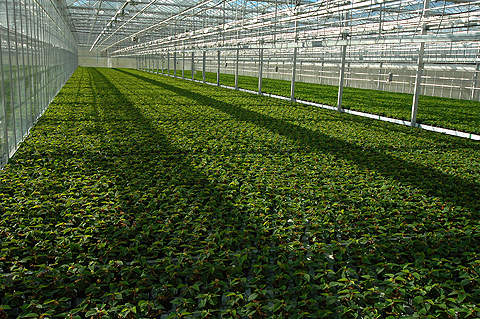Research & Development
Applications
About R&D
Research and development of plants is a critical field that drives innovation in agriculture and horticulture. Through cutting-edge research, scientists and growers are able to develop new plant varieties that are more resilient, productive, and nutritious. This research enables farmers to grow crops in different conditions and climates, resulting in higher yields and better quality crops. The research also involves the development of new technologies and methods for growing plants, such as precision farming, hydroponics, and vertical farming.

Indoor Farming
Indoor farming and research and development are a dynamic combination that drives innovation in the agriculture industry. Indoor farming allows for precise control over the growing environment, leading to higher yields, better quality crops, and faster growth. This makes it an ideal platform for research and development. Scientists and growers can use indoor farming to test new plant varieties, growing methods, and technologies. Through experimentation, they can optimize the growing conditions for specific crops and develop new techniques that can be applied to both indoor and outdoor farming.
Research and development in indoor farming is also focused on improving the energy efficiency, reducing the environmental footprint and increasing the sustainability of the farming practices. For example, scientists are experimenting with different lighting and irrigation systems, as well as using precision farming techniques and automation to optimize the growing conditions.
Indoor farming and research and development are also playing a crucial role in feeding the world's growing population. Indoor farming allows for year-round crop production, which is increasingly important as the world's population continues to grow. With the help of research and development, indoor farmers are able to produce more food in less space, with fewer resources, and with less environmental impact.

Vertical Farming
Vertical farming and research and development are at the forefront of innovation in the agriculture industry. Vertical farming allows for the production of crops in a controlled, indoor environment, using stacked layers to maximize the use of space. This unique growing method provides many benefits, including higher yields, reduced water consumption, and a smaller environmental footprint. It also allows for year-round crop production, making it a viable option for feeding the world's growing population.
Research and development in vertical farming is focused on improving the efficiency and sustainability of this method. Scientists and growers are experimenting with different lighting and irrigation systems, precision farming techniques, and automation to optimize the growing conditions for specific crops. They are also researching ways to improve the energy efficiency of vertical farms, as well as ways to recycle resources such as water and nutrients.
One of the main advantages of vertical farming is the ability to produce crops in urban areas, where there is limited land available for traditional farming. This allows for fresh, locally-sourced produce to be available in urban areas, reducing the need for transportation and distribution. Additionally, vertical farming can be used to grow a wide range of crops, including leafy greens, herbs, and even certain fruits and vegetables.

Greenhouse
Greenhouse farming and research and development are closely intertwined, with greenhouses providing an ideal environment for scientific experimentation and crop cultivation. Greenhouses are controlled, semi-enclosed environments that allow farmers to grow crops in a protected environment, while still taking advantage of natural sunlight. This allows for year-round crop production and the ability to grow a wide range of crops, including fruits, vegetables, and ornamental plants.
Research and development in greenhouse farming is focused on improving the efficiency and sustainability of this method. Scientists and growers are experimenting with different growing techniques, lighting systems, irrigation systems, and precision farming technologies to optimize the growing conditions for specific crops. They are also researching ways to improve the energy efficiency of greenhouses, as well as ways to recycle resources such as water and nutrients.
Greenhouses are also being used to grow crops in areas where traditional farming methods may be difficult, such as in regions with extreme temperatures or limited water resources. Greenhouses also provide a controlled environment for research on plant breeding, disease control, pest management, and other areas of plant science.